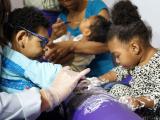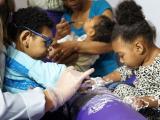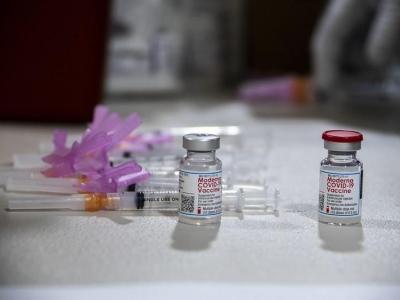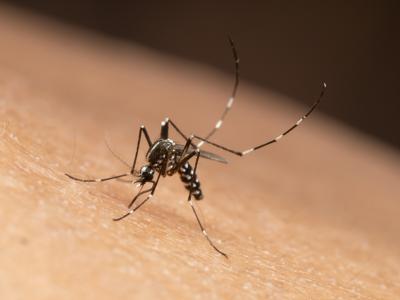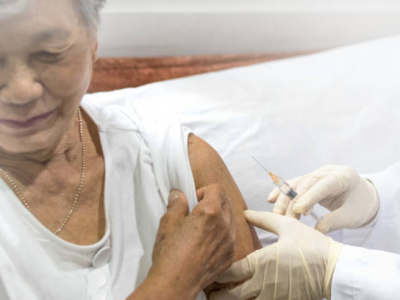The World Health Organization (WHO) has started posting weekly situation updates on outbreaks of Zika virus and possible complications from the disease, and it also has issued an interim case definition for the illness.
Both reports were posted Feb 12, capping a busy week of new developments with the virus, including studies that strengthened the association between maternal Zika virus infection and microcephaly in babies. In other developments, Brazil updated its microcephaly investigation totals and refuted an environmental group's claim that a larvicide used in drinking water may be causing the birth defect.
WHO sets 6-month tasks, priorities
The WHO said in its situation update that it and partners have established a strategic response framework that sets tasks and priorities for the next 6 months, covering surveillance, community development, vector control, child and maternal health, and research and development. It added that it is finalizing an overview of urgent needs for the Zika virus response.
At WHO headquarters and at its Pan American Health Organization (PAHO), incident management systems have been activated, with the two groups coordinating responses with national governments, United Nations agencies, and nongovernmental organizations.
The report provides a big-picture view Zika virus activity, which according to estimates has sickened 1.5 million so far in Brazil, followed by 25,000 suspected cases in Colombia, the next worst hit country. Columbia has confirmed 1,331 cases since October. The WHO added that Cape Verde has reported more than 7,000 suspected Zika virus cases.
So far, Brazil and French Polynesia are the only affected countries reporting congenital abnormality levels that are well above average, though isolated microcephaly cases—one in Hawaii and one in Slovenia—have been reported in women who visited or recently lived in Zika-hit countries. Colombia hasn't reported any microcephaly cases, but health officials there are closely watching for any unusual increases.
Five countries have reported rises in Guillain-Barre syndrome (GBS): Brazil, Colombia, El Salvador, Suriname, and Venezuela. However, the possible association with Zika seems less clear cut. The WHO said none of the GBS cases in Colombia or El Salvador involved lab-confirmed Zika infection, and it added that the cause is unknown, especially since dengue, chikungunya, and Zika virus have all been circulating at the same time in the Americas. "Investigations to determine the cause of infection are ongoing in countries with increased incidence of GBS," the agency said.
In Brazil, the outbreak's epicenter, public health officials have visited 20 million households to look for mosquito breeding grounds, and 500,000 people are working on vector control and public health messaging activities, according to the WHO report. Brazil has no plans to cancel its hosting of the 2016 Olympic Games in Rio. The August timing of the event comes during winter, when mosquitoes are least active.
Interim case definition to help with surveillance
The WHO also on Feb 12 issued an interim case definition of Zika virus infection to help standardize classification and reporting.
A suspected case is defined as person with a rash and/or fever with at least one of the following: arthralgia, arthritis, or conjunctivitis. The WHO defines a probable case as a suspected case with IgM antibody against Zika virus and an epidemiologic link, such as contact with a confirmed case or residence in or travel to an area with local Zika transmission.
A confirmed case is defined as a person with a recent Zika infection as confirmed by detection of viral RNA or antigen in serum or other samples or detection of IgM antibody against Zika and a 90% plaque-reduction neutralization test at certain cutoffs compared with other flaviviruses, with exclusion of such viruses.
Brazil updates microcephaly count, rejects larvicide suspicion
Meanwhile, Brazil's health ministry said Feb 12 that it had received reports of 296 more suspected cases of microcephaly. However, it ruled out 765 earlier suspected ones, according to an official statement translated and posted by Avian Flu Diary, an infectious disease news blog.
Brazilian authorities are still investigating 3,862 suspected microcephaly cases, with 462 of them now confirmed and 765 ruled out as of Feb 2. The cumulative number of suspected cases is now at 5,079.
Brazil's 462 confirmed microcephaly cases span 175 cities in 13 states, an increase from 156 cities in 9 states reported in the ministry's report the week before.
The health ministry said that despite the possible relationship with Zika virus, microcephaly can be caused by other conditions such as syphilis, toxoplasmosis, rubella, cytomegalovirus, and herpes virus.
In other developments, the health ministry on Feb 13 issued a statement countering an Argentine environmental group's charge that the larvicide pyriproxifen, used in some drinking water supplies, is a more likely microcephaly culprit than Zika virus, according to statements translated and posted by Avian Flu Diary.
The charges led one of Brazil's southern states, Rio Grande Do Sul, to temporarily suspend use of the larvicide in drinking water. However, Brazil's health ministry quickly posted a clarification on the use of pyriproxifen, noting that the product had been cleared by the WHO's pesticide evaluation process and had also been certified by Brazilian safety officials.
It added that there is no scientific basis for a link between the use of pyriproxifen and microcephaly and that some cities that haven't used it have also reported microcephaly cases.
NAS workshop to air Zika priorities tomorrow
The National Academies of Sciences, Engineering, and Medicine are hosting a public workshop tomorrow to discuss research priorities, given the emergence of Zika virus in the United States. The meeting was requested by the US Department of Health and Human Services’ Assistant Secretary of Preparedness and Response (ASPR).
According to the meeting announcement, stakeholders will discuss steps to reduce the likelihood of local Zika virus transmission in the United States, identify knowledge gaps, pin down the most important research questions, such as the link between Zika virus and microcephaly, and assess communication needs regarding the risks and mitigation strategies.
The meeting will take place at the National Academy of Sciences building in Washington, DC, starting at 8:30 am Eastern time, but it will also be Web-streamed live.
A document summing up the presentations will be prepared at the end of the session, but no consensus findings or recommendations.
See also:
Feb 12 WHO Zika virus situation report
Feb 12 WHO Zika infection interim case definitions
Feb 12 Avian Flu Diary post
Feb 13 Avian Flu Diary post on larvicide controversy
NAS Zika workshop meeting background






